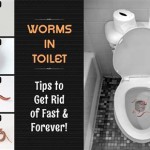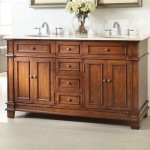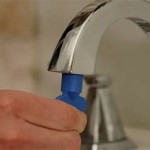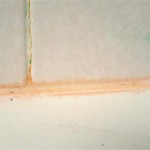Best Ways to Unclog a Double Bathroom Sink Plug Hole
Double bathroom sinks offer convenience in shared spaces, facilitating simultaneous use and reducing conflicts. However, the plumbing configuration of these sinks, often involving a shared drain line and P-trap, makes them equally prone to clogs as single sinks, sometimes even more so. The accumulation of hair, soap scum, toothpaste, and other debris can slowly restrict water flow, eventually leading to a complete blockage. Understanding the common causes of these clogs and implementing effective unclogging methods is crucial for maintaining a functional and hygienic bathroom environment.
Identifying the early signs of a clogged drain is the first step toward preventing a major plumbing issue. Slow drainage is a primary indicator. If water takes significantly longer to empty from either sink basin, it suggests an obstruction is forming. Gurgling sounds emanating from the drainpipe are another warning sign, indicating trapped air struggling to escape past the blockage. Foul odors rising from the drain also point to decomposing organic matter within the pipe, which contributes to the clog. Addressing these issues promptly can prevent them from escalating into more complex and costly plumbing repairs.
1. Initial Inspection and Manual Removal
Before resorting to chemical solutions or plumbing tools, a thorough initial inspection is essential. Begin by examining the sink stoppers. These often trap hair and debris, acting as the first line of defense against clogs. Remove the stoppers and carefully clear away any visible accumulation. A small hook or bent wire can be useful for retrieving stubborn clumps of hair tangled around the stopper mechanism.
Next, inspect the area around the drain openings. Debris may be lodged just below the surface, restricting water flow. A pair of tweezers or a small tool can be used to extract any visible obstructions. Flushing the drain with hot water after each extraction can help dislodge any remaining loose particles. Sometimes, this simple manual removal is sufficient to clear minor clogs. However, if the drainage remains slow, further investigation and more aggressive methods are required.
If the initial inspection reveals a significant amount of visible debris, consider using a wet/dry vacuum to extract it. Cover one of the sink drains and position the vacuum hose over the other. The suction can pull out large clumps of hair, soap scum, and other materials that are contributing to the blockage. Repeat the process on both drains to ensure a thorough removal of surface-level obstructions. This method is particularly effective for removing loose debris that has not yet formed a solid clog deeper within the drainpipe.
2. Utilizing Natural and Chemical Solutions
For clogs that are not easily removed manually, natural and chemical solutions offer alternative approaches. Boiling water is a simple and effective method for dissolving grease and soap scum. Carefully pour a kettle or pot of boiling water down the drain, taking precautions to avoid splashing and burns. The heat will help to melt away the accumulated buildup, restoring proper drainage. This method is particularly effective for clogs caused by fatty substances that solidify within the pipes.
A combination of baking soda and vinegar creates a chemical reaction that can effectively break down clogs. Pour approximately one cup of baking soda down the drain, followed by one cup of white vinegar. The mixture will fizz and bubble, creating pressure that helps to dislodge the obstruction. Allow the mixture to sit for at least 30 minutes, or preferably overnight, before flushing the drain with hot water. This method is a natural and less harsh alternative to chemical drain cleaners.
If natural solutions prove ineffective, chemical drain cleaners can be used. However, it is crucial to exercise caution when using these products, as they can be corrosive and harmful. Follow the manufacturer's instructions carefully and wear protective gloves and eyewear to prevent skin and eye irritation. Avoid mixing different types of drain cleaners, as this can create dangerous fumes. Chemical drain cleaners should be used as a last resort, after attempting manual removal and natural solutions.
When using chemical drain cleaners, it is important to select a product that is specifically designed for the type of clog you are dealing with. Some drain cleaners are formulated to dissolve hair, while others are more effective at breaking down grease and soap scum. Using the appropriate product can increase its effectiveness and minimize the risk of damaging your plumbing.
3. Employing Plumbing Tools: Plunger and Drain Snake
When natural and chemical solutions fail to resolve the clog, plumbing tools, such as a plunger and a drain snake, become necessary. A plunger creates suction and pressure to dislodge the obstruction. Ensure there is enough water in the sink to cover the cup of the plunger. Create a tight seal around the drain opening and repeatedly plunge the drain for several minutes. If the clog is stubborn, try covering the overflow drain with a wet cloth to create a stronger suction.
A drain snake, also known as a plumbing snake or auger, is a flexible tool that can be inserted into the drainpipe to break up or retrieve the clog. Feed the snake slowly into the drain, rotating it as you go. When you encounter resistance, continue rotating the snake to break through the obstruction or snag it. Once you have broken up the clog or retrieved it, carefully withdraw the snake and clean it thoroughly.
When using a drain snake in a double sink, it is important to understand the plumbing configuration. The two sinks usually share a common drain line and P-trap. Therefore, inserting the snake into one drain may dislodge the clog in the other drain. It is advisable to alternate between the two drains when using the snake to ensure that the entire drain line is cleared. Furthermore, be cautious not to damage the drainpipes while using the snake, especially if the pipes are old or corroded.
After using a drain snake, it is important to flush the drain with hot water to remove any remaining debris. This will help to ensure that the drain is completely clear and that the clog does not re-form quickly. You can also use a combination of baking soda and vinegar to further clean and deodorize the drain.
In cases where the clog is located deep within the drainpipe, it may be necessary to remove the P-trap. The P-trap is a curved section of pipe located under the sink that traps debris and prevents sewer gasses from entering the bathroom. Place a bucket under the P-trap to catch any water that may spill out. Loosen the slip nuts that connect the P-trap to the drainpipes and carefully remove it. Clean out any debris that is trapped within the P-trap and reassemble it securely. Ensure that the slip nuts are tightened properly to prevent leaks.
If the clog persists after attempting these methods, it may indicate a more serious plumbing issue, such as a blockage deeper within the main drain line. In such cases, it is advisable to consult a professional plumber. Attempting to resolve complex plumbing problems without the necessary expertise and equipment can lead to further damage and more costly repairs.
Preventing future clogs is crucial for maintaining a smoothly functioning double bathroom sink. Install drain strainers in both sinks to catch hair and debris before they enter the drainpipe. Regularly flush the drains with hot water to dissolve grease and soap scum. Avoid pouring oil, grease, and food scraps down the drain. Periodically clean the sink stoppers and the area around the drain openings to remove any accumulated debris. By implementing these preventive measures, you can significantly reduce the risk of clogs and ensure that your double bathroom sink remains functional and hygienic.

How To Clear A Clogged Drain Reviews By Wirecutter

How To Unclog A Bathroom Sink The Home Depot

How To Unclog A Sink The Right Way

Step By Guide Using A Plunger To Unclog Your Sink The Brisbane Plumbers

Plumbing How Can I Unclog A Sink When The Drain Stopper Cannot Be Removed Home Improvement Stack Exchange

Unclog A Blocked Sink Drain 4 Main Ways

How To Plunge A Sink Unclog Drains Quickly Easily

How To Unblock A Sink With Your Bare Hands When You Have No Plunger 4 Steps Instructables

How To Unclog A Bathroom Sink

How To Naturally Clean A Clogged Drain The Definitive Guide Bren Did
Related Posts







